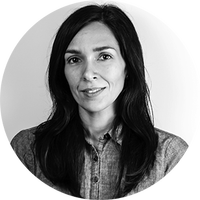The beauty of the Christmas Bird Count
Counting birds for science is one of the most fulfilling ways to end the year


The ash tree I'm anchored to is laced with poison ivy vines, one as thick as my arm. The childhood adage, don't be a dope, don't touch the rope, is loud in my mind because although I'm no "dope" I'm definitely touching the rope — the ash is the only thing keeping me from falling into the icy creek below.
I embrace the ash with my left arm and through a layer of fresh snow, I dig in and plant myself. With my right hand I bring binoculars to my eyes and scan the plowed cornfield beyond the creek for movement. I'm looking for a flock of Horned Larks, small little brown birds with two tufts of feathers on either side of their head that resemble horns. Against a backdrop of tilled earth they are cryptic but, lucky for me, it snowed last night and not much can stay hidden on the field. My desire to find a flock of larks sprouts from a kernel of hope that a Lapland Longspur might be embedded among them, or maybe a Snow Bunting. Both birds are as exquisite-looking as they sound. The longspur is sparrow-like, but fairer, with a sweet round face. The bunting is white and in its winter plumage its cheeks are decked out in chic buff-colored feathers.
The cornfield is empty. There are no chattering larks, no longspurs mixed in, and there are certainly no buntings. The field is host only to a rolling wind that carries with it a chill of -10 degrees Fahrenheit and the smell of Christmas in the country — a peppery mix of soot, smoke, and decay. My eyes sting. It's been a while since I've blinked. I let my binoculars hang at my side for a moment. It's the last day of the year and I'm looking for birds in subzero temperatures. Of course, I am. It's the annual Christmas Bird Count.
The Week
Escape your echo chamber. Get the facts behind the news, plus analysis from multiple perspectives.

Sign up for The Week's Free Newsletters
From our morning news briefing to a weekly Good News Newsletter, get the best of The Week delivered directly to your inbox.
From our morning news briefing to a weekly Good News Newsletter, get the best of The Week delivered directly to your inbox.
The bird count is important to me — I've done it every year for the past four years. Nothing can stop me, not the cold, rain, the flu, or even poison ivy. Birders — don't call us birdwatchers — are a robust and growing group of professionals, enthusiasts, students, and everything in between. In the U.S. we are 45 million strong and along with other wildlife-lovers and conservationists, we contributed close to $80 billion to the U.S. economy in 2016.
The data collected by citizen scientists like me during the Christmas Bird Count helps ornithologists, biologists, environmental scientists, analysts, and others understand species diversity, movement, and dispersal. The information also helps them gauge how birds are surviving a warming planet. Spoiler alert: It's not going well for coastal species. A bunch of other species are in decline, too.
When I signed up for my first Christmas Bird Count, in 2014, I was given specific instructions by the compiler (the person who collects all the counting information from participants at the end of the count) to check the hedge row at the edge of a particular cornfield. I knew what she was after —the elusive Loggerhead Shrike. The thought of counting this bird within my assigned area filled me with excitement and dread. It still does.
I carefully peel myself away from the ash tree. The barren field isn't worth any more of my time. As I move away, I check to ensure that the eyepiece on my camera, binoculars, and scope haven't brushed up against the fiery vines. I double check, but I'm still not sure. I whisper Thanks to the tree and move on.
A free daily email with the biggest news stories of the day – and the best features from TheWeek.com
The Loggerhead Shrike is a songbird, but it's predatory, like a hawk, or an eagle, although it doesn't have talons. Talons are unique to raptors, they allow them to kill, and grasp, their prey. Everything about this bird is a marvel. The shrike's plumage is snow-white underneath, warm gray on top, the wings are jet-black. Its black bill sports a downward curving hook on the upper mandible. Its lores, supercilium, and auriculars are black, so it looks as though it's wearing the mask of Zorro. The most interesting aspect of this bird is what it's missing: talons. Because of this it can't hold on to its prey, so the Shrike impales the grasshoppers, rodents, and the other birds it hunts. Unfortunately, this avian badass has become a species in decline. It hasn't been seen in my area for about 10 years, and I wonder if I will ever see one.
I make my way to the hedge row, plotting each step along the way. In this weather, falls are the enemy, and they happen all the time. My legs feel heavy as they move through the snow. My face mask is wet with condensation from my breath. Discomfort is setting in. I scan the hedge row, as I do every year during the count, and at least once a week year-round. I do it in vain and with dread in my heart. The bird is never there, or at any of the locations it's been seen at in the past 30 years, and it isn't here, on the last day of the year, during the Christmas Bird Count. It's been over two hours. The cold killed my phone battery, but it doesn't matter because my fingers are too stiff to continue tapping in my observations. After 30 minutes of zero bird traffic, I call it a year.
I'm not an ornithologist, I'm not even a scientist, but I view counting birds for science as a way to contribute to a larger body of scientific work, especially as it pertains to understanding anthropogenic impacts on birds — it's the least I can do while I wait for the Loggerhead Shrike to return. I don't know if that will happen next year, or the year after that. But I'll keep counting, for science and for the birds.
You can count too. Join a Christmas Bird Count in your area. No experience necessary.
Orietta Estrada is a bird-centric writer and editor of The Maryland Yellowthroat — a publication of the Maryland Ornithological Society.
-
 Political cartoons for January 4
Political cartoons for January 4Cartoons Sunday's political cartoons include a resolution to learn a new language, and new names in Hades and on battleships
-
 The ultimate films of 2025 by genre
The ultimate films of 2025 by genreThe Week Recommends From comedies to thrillers, documentaries to animations, 2025 featured some unforgettable film moments
-
 Political cartoons for January 3
Political cartoons for January 3Cartoons Saturday's political cartoons include citizen journalists, self-reflective AI, and Donald Trump's transparency
